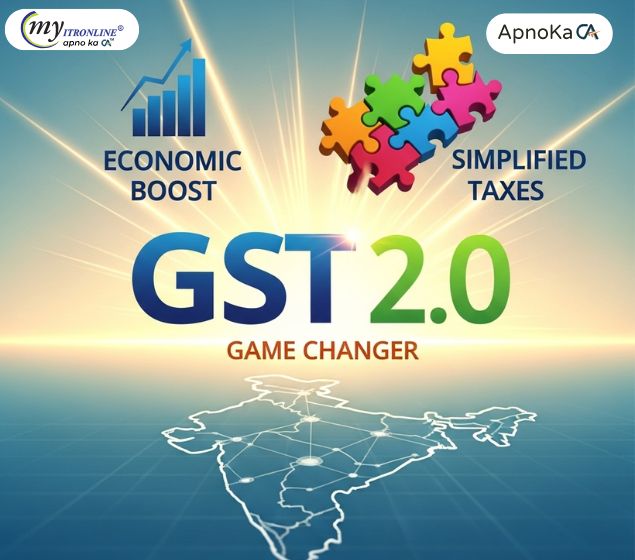# indiataxreform
6 posts in `indiataxreform` tag

GST 2.0: A Game Changer for India? Simplified Taxes & Economic Boost
This blog post provides a comprehensive overview of India's GST 2.0, implemented on September 22, 2025. It details the key features, including the reduction of tax slabs to 5% and 18% (with a new 40% for luxury/sin goods), lower taxes on essential goods, durables, and automobiles, and increased prices for luxury items. The article identifies beneficiaries like everyday households, the middle class, farmers, healthcare consumers, and MSMEs. It also addresses potential challenges such as revenue shortfall, price pass-through issues, and transition headaches for businesses. Finally, it outlines expected economic ripples and crucial factors to monitor for the reform's success, concluding that GST 2.0 is a bold step towards simplifying life for millions. An appendix with sample MRP comparisons is also included.
.jpg)
Goodbye 1961, Hello 2025: India's New Income Tax Act Explained in Simple Terms
This blog post details India's landmark decision to replace the sixty-year-old Income-tax Act, 1961, with the new, simplified Income-tax Act, 2025, which will be effective from April 1, 2026. It breaks down the key changes in simple terms, explaining the reduction in legal complexity, the introduction of a unified "Tax Year," clearer definitions for digital assets, and the move towards faceless, technology-driven tax processes. The post highlights how these changes aim to create a more transparent, efficient, and taxpayer-friendly direct tax system for individuals and businesses across the country.
.jpg)
New Income Tax Bill 2025: Big Changes Coming!
India is embarking on a major tax reform, replacing its outdated Income Tax Act, 1961, with the New Income Tax Bill 2025. A parliamentary committee has proposed 285 changes to this draft legislation, aiming to simplify language, modernize provisions (including for digital assets), reduce litigation, and enhance taxpayer experience. This blog post breaks down the reasons behind this overhaul, the committee's role in suggesting extensive "corrective" changes, and the key implications for taxpayers as India moves towards a new tax regime from April 1, 2026.
.jpg)
Tax Reforms for LLPs & Partnership Firms: What’s Changing in April 2025?
With effect from April 1, 2025, the Finance Act implements major income tax reforms for partnership enterprises and limited liability companies in India. This article examines the changes that are expected, their possible effects, and practical measures that companies may take to ensure a seamless transition.

Simplification of the Income Tax Act 1961: No New Rates, Just Easier Compliance
Without altering tax rates, the ongoing review of the Income Tax Act of 1961 seeks to enhance compliance and streamline tax regulations. This project aims to improve digital integration, eliminate out-of-date provisions, and make the Act easier to use. It is anticipated to be finished by mid-December 2024, and taxpayers can anticipate more transparency and lower compliance expenses.
.jpg)
A Simplified TDS System: How One Rate, One Section Reduces Tax Hassles
A revolutionary move toward streamlining tax compliance is the Indian government's proposal to implement a single rate and section for Tax Deduction at Source (TDS). This program seeks to reduce compliance obligations, promote a pro-business environment, and remove the confusion brought about by different rates and sections. Find out how this change helps taxpayers, simplifies compliance, and supports India's objective of raising the Ease of Doing Business index.
